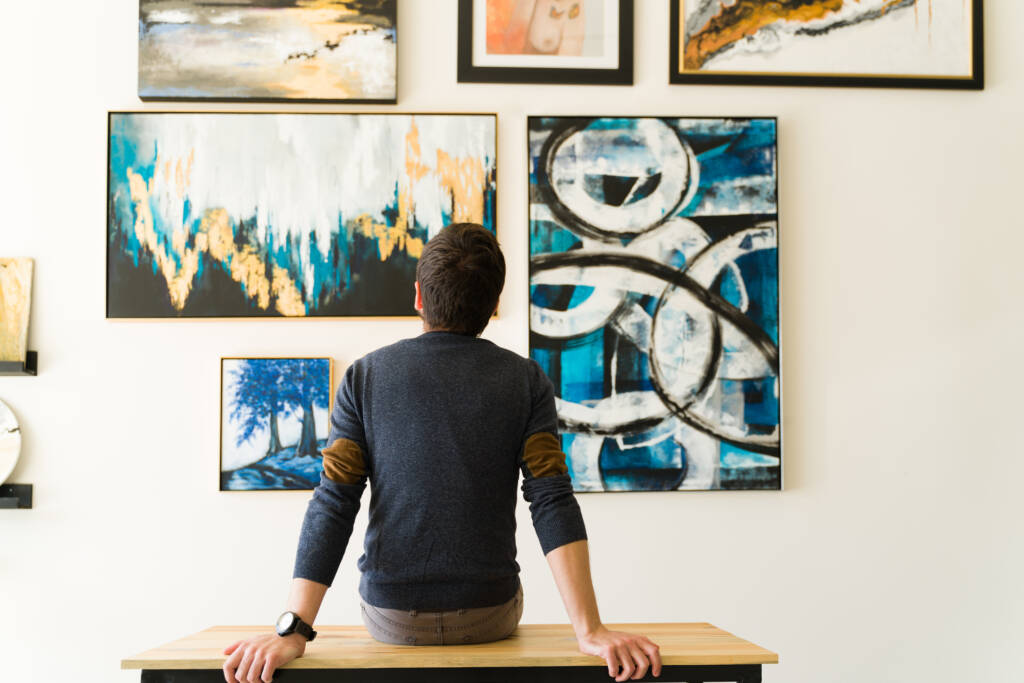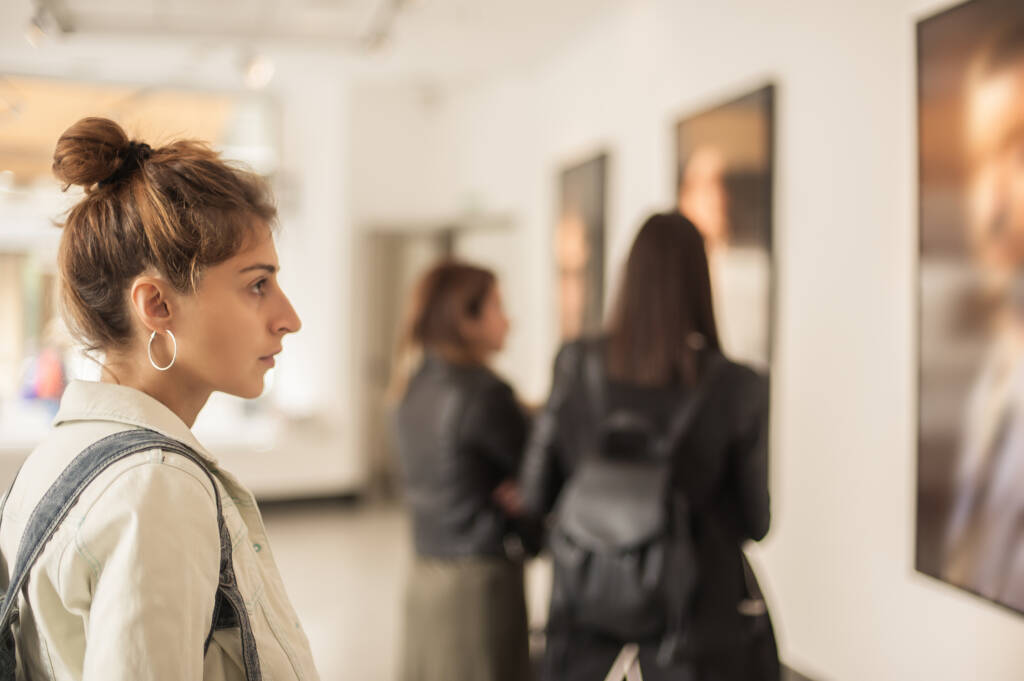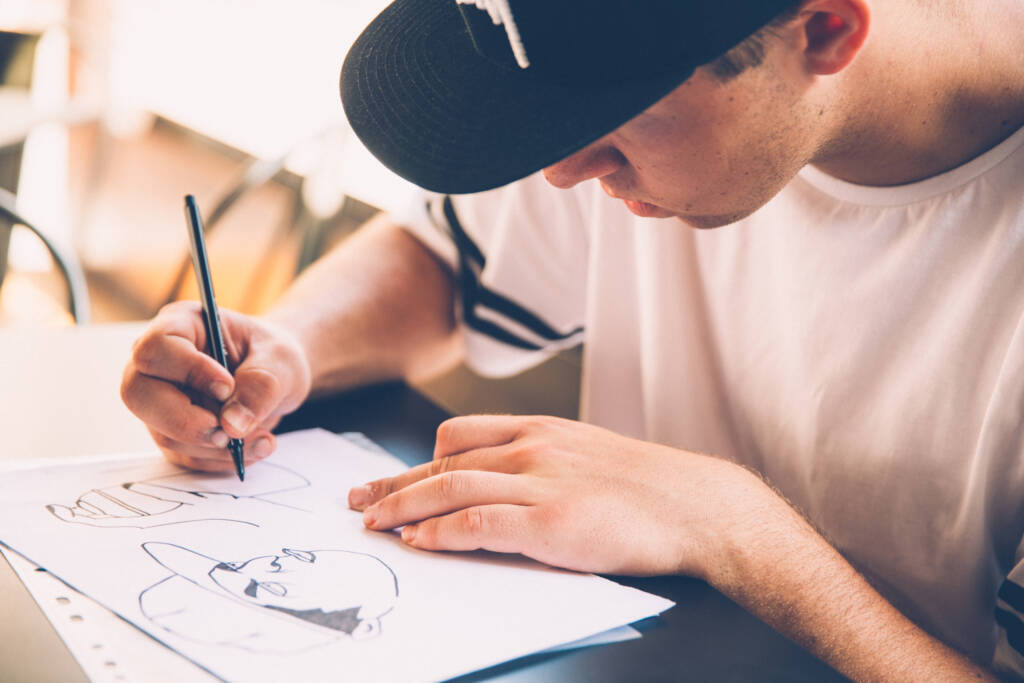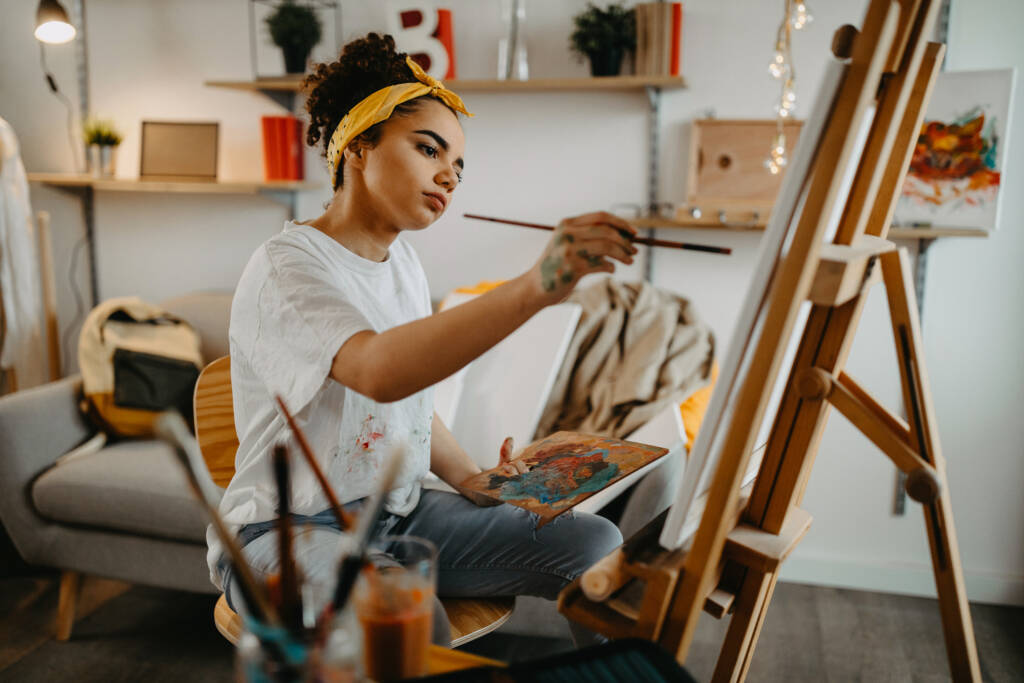
Art in World Cultures

Who is the greatest artist of all time? Is it Leonardo daVinci? Claude Monet? Michelangelo? Pablo Picasso? Is the greatest artist of all time someone whose name has been lost to history? You will learn about some of the greatest artists while also creating art of your own, including digital art. We will explore the basic principles and elements of art, learn how to critique art, and examine some of the traditional art of the Americas, Africa, and Oceania in addition to the development of Western art.
Major Topics and Concepts
Segment 1:
- Introduction to the Visual Arts
- Define “visual art” and distinguish visual arts from other forms of art.
- Identify common forms of visual art.
- Discuss why people create art.
- Discuss art movements and art periods.
- Describe career options related to art history and the study of art.
- The Elements and Principles of Art
- Define art concepts such as hue, value, shape, form, and balance.
- Identify the elements of art.
- Identify some of the design principles that artists use.
- Discuss how the elements of art are used within art pieces.
- Discuss how design principles are used to arrange the elements of art.
- Critiquing Art
- Define art critique.
- Identify some of the benefits of doing art critiques.
- Explain how context can influence an art critique.
- Discuss the steps that can be used to complete an art critique.
- Engage in an art critique of the painting The Raft of the Medusa.
- Prehistoric Art
- Define prehistoric art and discuss why much of this art remains a mystery to archaeologists and art historians.
- Describe cave paintings and discuss some of the theories about why they were created.
- Compare and contrast Paleolithic and Neolithic art.
- Examine prehistoric sculpture and the reasons it may have been created.
- Discuss prehistoric megalith monuments and examine the theories about why these monuments were created.
- Ancient Art
- Identify some of the common characteristics of ancient art.
- Discuss the art of ancient Sumerians.
- Explain how Ancient Egyptian religion influenced its art.
- Identify and discuss the styles of Ancient Greek architecture.
- Identify the styles of Ancient Greek sculpture and pottery.
- Ancient Roman, Early Christian, and Medieval Art
- Describe the features used in Roman architecture.
- Examine early Christian art and its influence on later architecture and art.
- Define Byzantine, migration, and insular art and the characteristics of these art periods.
- Discuss the characteristics of Romanesque art.
- Identify the common features of Gothic architecture.
- The Renaissance
- Identify the characteristics of Renaissance art.
- Discuss Early Netherlandish art and its relationship to Renaissance art.
- Explain how other disciplines of study and social factors influenced Renaissance art.
- Examine some of the most famous works of Renaissance art, including those by Leonardo da Vinci, Michelangelo, and Raphael.
- Define Mannerism and discuss how it differed from the art of the High Renaissance.
- Art of the Americas
- Discuss geoglyphs in North and South America.
- Define pre-Columbian art in the Americas.
- Identify prehistoric painting in the Americas.
- Examine art from major cultural empires in Mesoamerica and South America, including the Olmec, Maya, Aztec, and Inca cultures.
- Discuss indigenous art in North America such as beadwork, baskets, and totem poles.
- From the Baroque to the Romantics
- Identify the characteristics of Baroque, rococo, neoclassical and Romantic art.
- Discuss the social and political influences on Baroque, rococo, neoclassical, and Romantic art.
- Explain how art from earlier periods influenced Baroque, rococo, neoclassical, and Romantic art.
- Examine some of the important pieces of art from the Baroque, rococo, neoclassical and Romantic periods.
- Compare and contrast Baroque art with Renaissance art.
- Modern Art
- Define art movements such as Impressionism, Postimpressionism, Expressionism, and Realism.
- Identify the characteristics of Impressionistic and Postimpressionistic art.
- Describe how modern art movements build on and react to other movements.
- Discuss some of the major artists of Impressionism and Postimpressionism.
- Discuss the beginning of photography and its use as an art form.
- African Art
- Identify the phases of rock engraving found in Africa.
- Describe the sculptures created by different cultures in Africa.
- Discuss the different types of masks created and what materials were used to make them.
- Identify some of the famous architectural creations in Africa.
- Discuss some of the social and natural factors that influenced the creation of art in Africa.
- Oceanic Art
- Identify some of the characteristics of Oceanic art.
- Describe some of the human sculptures found in Polynesia.
- Discuss how the Pacific Ocean and life on Pacific islands influenced Micronesian art.
- Learn more about Bisj poles and other Melanesian art creations.
- Identify some of the styles of rock art present in Australia.
Competencies
Visual Art
Students will demonstrate an understanding of visual art by explaining forms of visual art, differentiating motivations for creating art between art movements and periods, and summarizing career options related to visual art.
Elements and Principles of Art
Students will demonstrate an understanding of the elements and principles of art by describing the elements of art, explaining the design principles used in art, and explaining the concepts used in art.
Critiquing Art
Students will demonstrate an understanding of critiquing art by explaining the benefits of art critique, explaining the influence of context on art critique, and explaining the steps for an art critique.
Prehistoric Art
Students will demonstrate an understanding of prehistoric art by describing the mysteries behind prehistoric art, explaining the reasons behind the creation of prehistoric sculptures, and comparing and contrasting paleolithic and neolithic art.
Ancient Art
Students will demonstrate an understanding of ancient art by describing the characteristics of ancient art, describing the commonalities of ancient art and explaining the influence of ancient culture on ancient art.
Foundations of Western Art
Students will demonstrate an understanding of the foundations of Western art by describing the characteristics of Western art, explaining the relationship between art and culture and analyzing architecture and art types of Western art.
Art from the Renaissance Period
Students will demonstrate an understanding of art from the Renaissance period by describing characteristics of Renaissance art, explaining the influence of social factors on Renaissance art, and analyzing famous works of Renaissance art.
Art of the Americas
Students will demonstrate an understanding of art of the Americas by describing characteristics of art from the Americas, explaining Influences of indigineous cultures on art, and analyzing art forms for functional and spiritual purposes.
Post-Renaissance Art Periods
Students will demonstrate an understanding of post-Renaissance Art Periods by describing the characteristics of post Renaissance art periods, explaining the social influences on art from the post Renaissance art periods and analyzing important pieces of art from the post Renaissance art periods.
Modern Art Movements
Students will demonstrate an understanding of modern art movements by describing the characteristics of Modern Art movements, explaining the influences on the Modern Art movements and analyzing major artists of Modern Art movements.
African Art
Students will demonstrate an understanding of African art by describing the characteristics of African art, explaining the influences on African art, and analyzing types of African art forms.
Oceanic Art
Students will demonstrate an understanding of Oceanic art by describing the characteristics of Oceanic art, explaining the influences on Oceanic art and analyzing types of Oceanic art forms.

